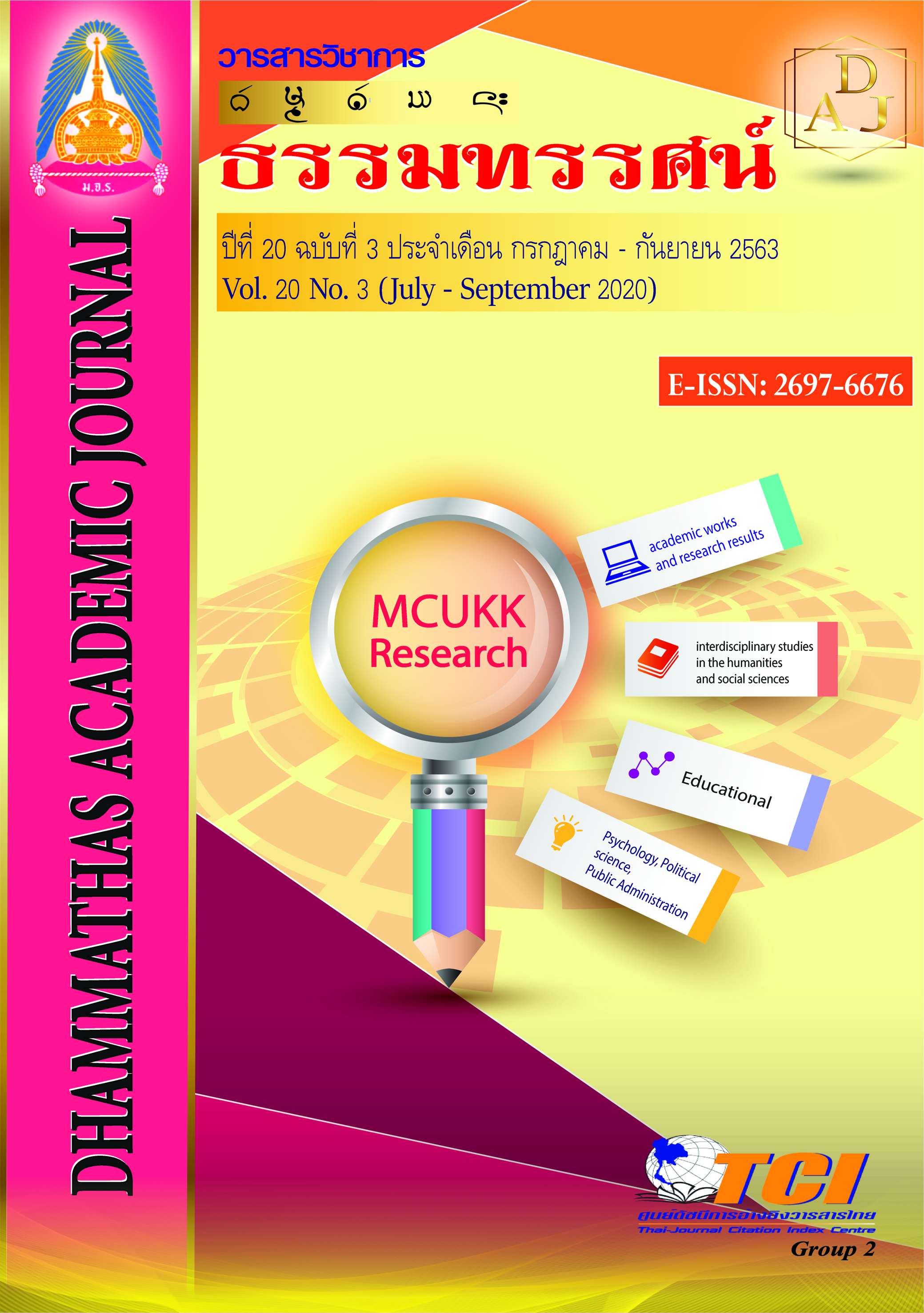Strategies for Educational Institutions Administration under the Office of Secondary Educational Service Area in the Northeast
Main Article Content
Abstract
The objectives of this research were: 1) to study educational administration elements under the Office of Secondary Educational Service Area, 2) to study the current situations, desirable conditions of educational institutions administration under the Office of Secondary Educational Service Area and 3) to develop strategies of educational institutions administration under the Office of Secondary Educational service Area. The sample group used in this research was 360 people including 120 school directors and 240 teachers. The research instrument was 5-level rating scale questionnaire with content validity (IOC) between 0.80 - 1.00 and reliability at 0.98. The data were analyzed by computer program.
The research results were summarized as follows:
1. The educational administration elements under the Office of Secondary Educational Service Area consisted of 6aspects as follows: 1. Competency of organization 2. Academic leadership 3. Learning management process 4. Atmosphere and organizational culture 5. Monitoring 6. Community support.
2. The current condition is at a medium level. The areas with the highest mean values were organizational competency, community support, monitoring, organizational climate and culture, learning process management. And academic leadership The desirable condition was at the highest level. The highest mean values were monitoring, community support, organizational competency, academic leadership, organizational climate and culture, and learning process management. And the needs of educational institutions administration under the Office of Secondary Educational Service Area in overall were at PNI = 0.51. When considered in each aspect, it was found that the aspect with the highest level of PNI was academic leadership with PNI =0.69, followed by Atmosphere and organizational culture, learning management process, monitoring and community support had PNI = 0.54, 0.52, 0.51, 0.47. The aspect with the lowest level of PNI was organizational competency with PNI = 0.38.
3. The strategies for educational institutions administration under the Office of Secondary Educational Service Area included: The 1st strategy: Academic leadership consisted of 1 goal, 6 measures, 6 indicators. The 2nd strategy: Atmosphere and organizational culture consisted of 1 goal, 4 measures, 4 indicators. The 3rd strategy: Learning management process consisted of 1 goal, 5 measures, 5 indicators. The 5th strategy: Community support consisted of 1 goal, 5 measures, 5 indicators. the 6th strategy: Organizational competency consisted of 1 goal, 7 measures, 7 indicators.
Article Details
References
Kaewkee, P. (2002). Educational management in the form of using schools or educational areas as bases. Bangkok : Photo Print.
Ministry of Education. (2003). National Education Act B.E. 2542 (1999) Amendment (2nd edition) 2002. Bangkok : Kurusapa.
Nilchavee, P. Siwaron, M. and Laddawan, T. (2017). The Strategy of Effective Work Management in Secondary Schools, under The Office of Secondary Educational Service Area 20. Dhammathas Academic Journal, 17(3), Special Issue, 297-309.
Office of the National Economic and Social Development Board. (2012). Summary of National Economic and Social Development Plan No. 11, 2012-2016. Bangkok : Office of the National Economic and Social Development Board.
Thapapal, P. (2008). Strategic management. Bangkok : Amon Printing.

